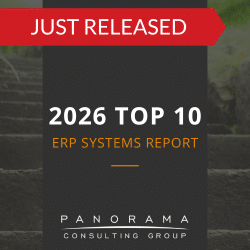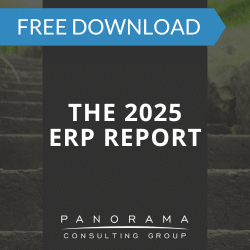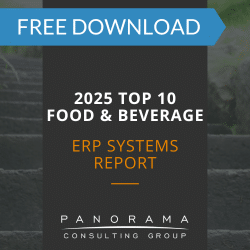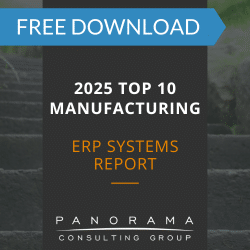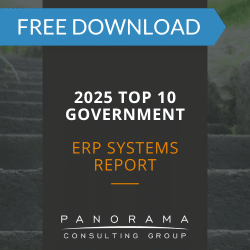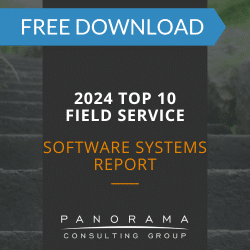Key Takeaways
- An AI readiness assessment helps organizations align leadership, data, infrastructure, and culture before launching AI initiatives.
- Common signs of poor AI readiness include fragmented data, outdated systems, skill gaps, and lack of strategic alignment.
- Evaluating readiness ensures AI investments deliver long-term value, reduce risk, and support enterprise-wide transformation.
Artificial intelligence (AI) has firmly moved beyond hype. It’s now a key driver of innovation, automation, and competitive advantage across many industries. But for all its potential, successful AI adoption isn’t as simple as implementing a new tool or signing a contract with a software vendor.
AI fundamentally reshapes how data is used, how decisions are made, and how people work. That’s why a thoughtful, structured approach to AI readiness is essential. Without it, organizations risk misaligned investments, compliance issues, and internal resistance that can stall or derail even the most promising AI initiatives.
Let’s explore seven signs that it’s time to consider an AI readiness assessment—a structured evaluation that examines your organization’s leadership, data, technology, culture, and workforce capabilities. If any of these signs feel familiar, your business could benefit from an expert assessment for AI readiness.
The 2026 Top 10 ERP Systems Report
What vendors are you considering for your ERP implementation? This list is a helpful starting point.
1. Leadership Sees AI as a Tactic, Not a Strategy
For AI initiatives to succeed, leadership must treat them as strategic imperatives and not experimental side projects.
Executive buy-in must go beyond approving budgets for AI roll-out. It must focus on embedding AI into the organization’s long-term goals and defining how that will look. Without alignment, AI investments often stall due to unclear expectations, inconsistent funding, and shifting priorities.
An AI readiness assessment helps organizations identify gaps in leadership vision and ensures executives are equipped to govern AI programs responsibly.
Let’s consider: A global manufacturer launches a pilot AI program in its procurement department to automate supplier risk scoring. The tool performs well in isolation, identifying vendors with late deliveries or quality issues. However, without enterprise-level leadership alignment, other departments don’t trust or adopt the system. The legal team worries about audit implications, IT flags integration risks, and finance continues using legacy risk models. Without a unified vision for how AI supports enterprise-wide objectives, the initiative remains a pilot program, delaying broader digital transformation.
2. Your Data Is Fragmented, Incomplete, or Inaccessible
AI relies on data, and not just any data. It needs accurate, complete, well-structured data that is accessible across systems.
Disparate legacy platforms, inconsistent data formats, and missing governance policies can severely limit AI’s potential. If your organization lacks a centralized view of key data or has no process for ensuring data quality, AI models will produce weak or misleading results.
A formal AI readiness audit includes a comprehensive data assessment, looking at:
- Completeness and accuracy
- Accessibility across departments
- Governance structures and ownership
- Integration capabilities
Let’s consider: A healthcare provider introduces AI to predict patient no-shows, but key data—such as appointment history, demographics, and insurance coverage—is scattered across siloed systems. Without integrated, clean data, the model produces unreliable forecasts, leading to scheduling inefficiencies and eroded trust in the tool.
3. Your Technology Stack Isn’t Built for AI
AI workloads demand specific infrastructure capabilities: scalable storage, high-performance processing, secure APIs, and flexible integration layers.
Many organizations find that their existing tech stacks are not designed to support modern AI applications. Bottlenecks like limited cloud capabilities, inflexible on-premise systems, and outdated integration frameworks can prevent AI from delivering real-time insights.
As part of an assessment for AI readiness, organizations should evaluate:
- Cloud readiness and scalability
- Data storage and processing capabilities
- API frameworks and middleware
- System interoperability
Let’s consider: A city government aims to automate permit processing using AI, but its legacy mainframe systems can’t support real-time data exchange. Without a scalable, cloud-enabled infrastructure, the AI tool operates in isolation, delaying approvals and requiring costly workarounds just to function.
4. Your Teams Are Anxious or Misinformed About AI
Culture matters. If your people are skeptical, fearful, or unaware of what AI means for their work, adoption will suffer even if the tech is flawless.
Employees may associate AI with job displacement, micromanagement, or unapproachable complexity. Without clear communication, training, and change management, internal resistance can undermine even well-funded AI initiatives.
As part of an AI readiness checklist, organizations should assess:
- Team sentiment toward innovation and change
- Communication channels for discussing AI goals
- Level of AI literacy across roles
- Opportunities for engagement and feedback
Panorama’s approach: When evaluating organizational readiness for digital transformation, our change management consultants lead change readiness assessments that surface concerns, identify champions, and shape messaging around empowerment—not replacement.
5. You’re Seeing Growing Skill Gaps in Data and Analytics
AI doesn’t just need infrastructure. It needs people who know how to design, implement, and manage intelligent systems.
If your team lacks data scientists, AI developers, or even basic analytics skills, that’s a red flag. And in many cases, it’s not just about technical talent. Business analysts, marketers, HR professionals, and others need to understand how to interact with AI-driven tools.
A strong AI readiness assessment includes a workforce analysis to determine:
- Which roles require upskilling
- Where to hire vs. train
- What baseline knowledge is needed organization-wide
Let’s consider: A logistics firm deploys an AI-driven predictive maintenance tool for its fleet. But field technicians, untrained in interpreting algorithmic insights, misread alerts or ignore them entirely. Repairs are delayed, and confidence in the system quickly erodes, undermining the investment before it gains traction.
6. You’re Unsure Which AI Projects to Prioritize
One of the clearest signs you need an AI readiness audit? You’re interested in AI but don’t know where to start.
Should you invest in generative AI for content? Predictive analytics for demand planning? Chatbots for customer support? Or AI enhancements within your ERP software?
Without a structured framework, organizations often invest in flashy tools with low ROI, while missing opportunities in areas with real potential.
Panorama’s enterprise software consultants help clients identify high-impact, high-feasibility use cases by evaluating:
- Data availability
- Strategic alignment
- Operational fit
- ROI potential
Let’s consider: A regional bank explores AI-powered chatbots to improve customer service. However, after an AI readiness assessment, leadership realizes fraud detection offers a stronger starting point — backed by cleaner data, clearer KPIs, and higher ROI potential.
7. You Haven’t Considered AI Governance or Risk Management
AI introduces legal, ethical, and operational risks that many organizations are unprepared to handle.
Bias, explainability, compliance, and privacy cannot be afterthoughts. They must be designed into the AI lifecycle from day one. Failing to address these areas can result in reputational damage, legal exposure, and regulatory penalties.
A thorough AI readiness checklist includes a review of:
- Data privacy and security protocols
- Regulatory obligations (e.g., HIPAA, GDPR, CCPA)
- Audit trails and explainability frameworks
- Ethical guidelines for AI development and deployment
Panorama’s role: We help organizations embed governance frameworks that ensure responsible AI use—from data handling to model transparency—while supporting innovation and compliance.
AI Readiness is Your Competitive Advantage
Artificial intelligence has enormous potential, but only for organizations prepared to use it responsibly, strategically, and effectively.
If your business sees even a few of these signs, it’s time to consider an AI readiness assessment. This process helps uncover hidden risks, identify strategic opportunities, and ensure your people, data, and systems are aligned for AI success.
Panorama’s consulting team brings deep experience in ERP selection, change management, and digital transformation. We help mid-to-large organizations prepare not only for AI adoption but for long-term AI maturity.
Want to Know Where Your Organization Stands?
Explore how Panorama’s AI readiness assessment helps organizations evaluate their preparedness across leadership, data, infrastructure, and culture.
Contact us to schedule your AI readiness assessment.






